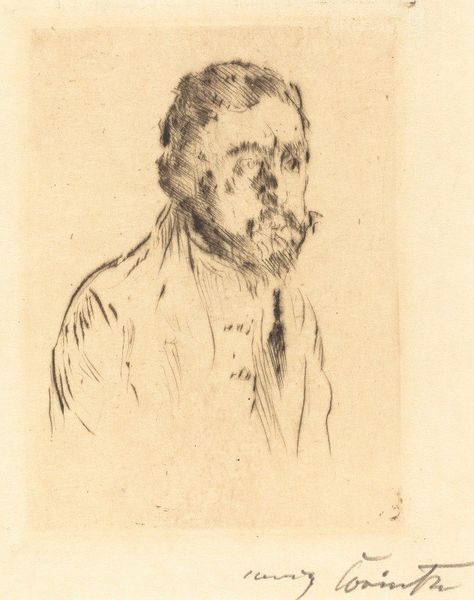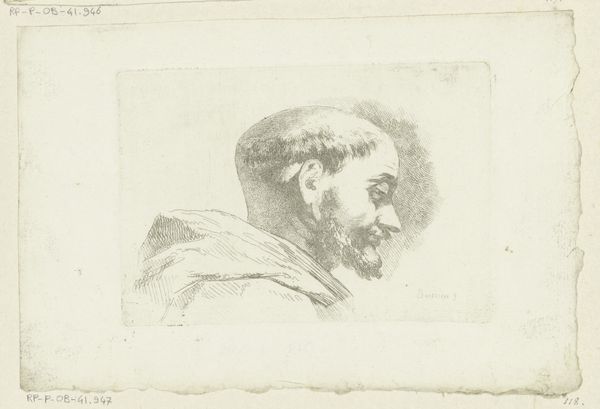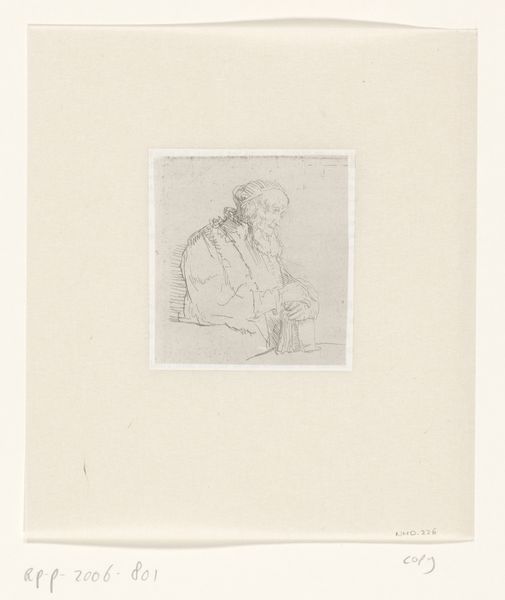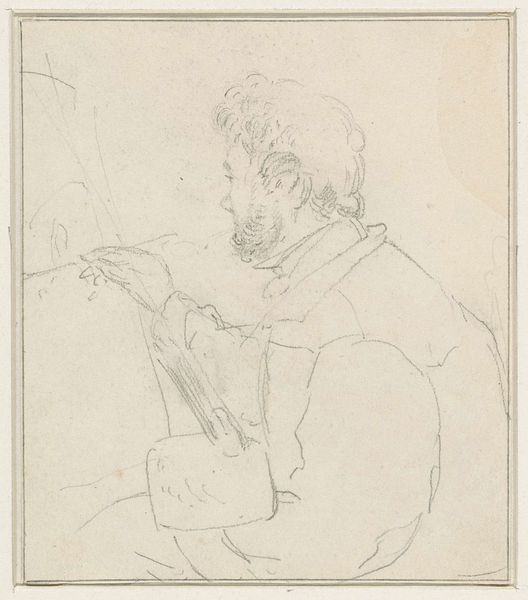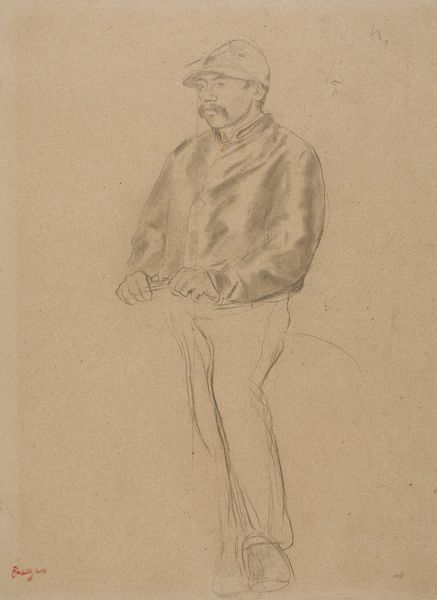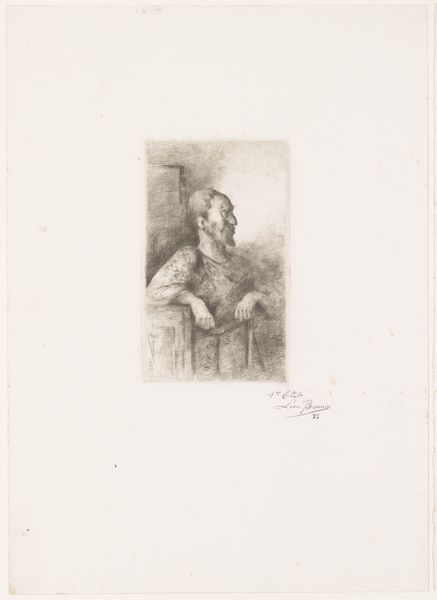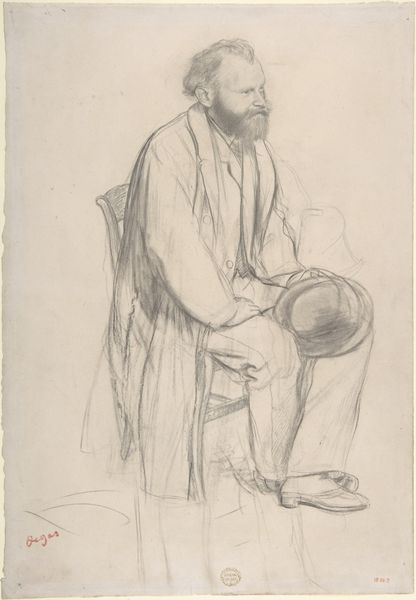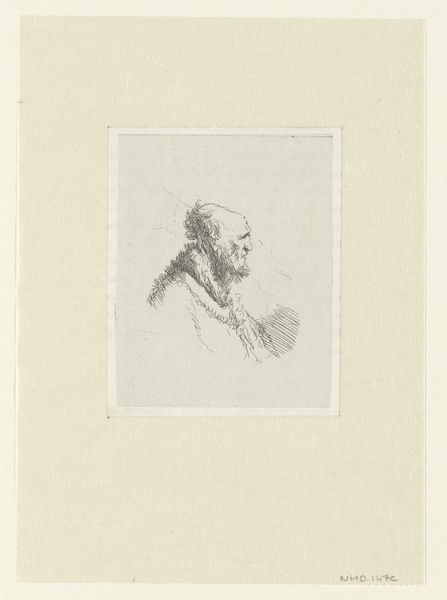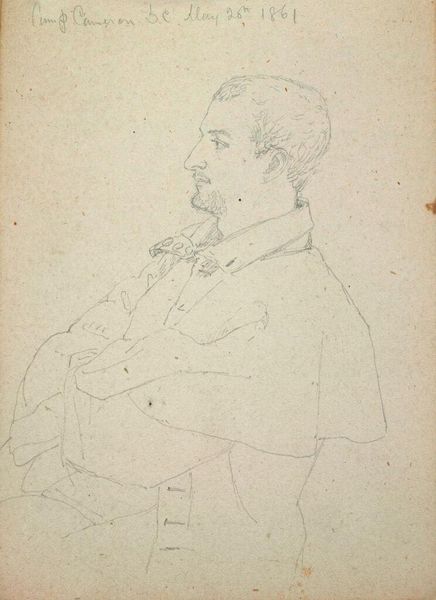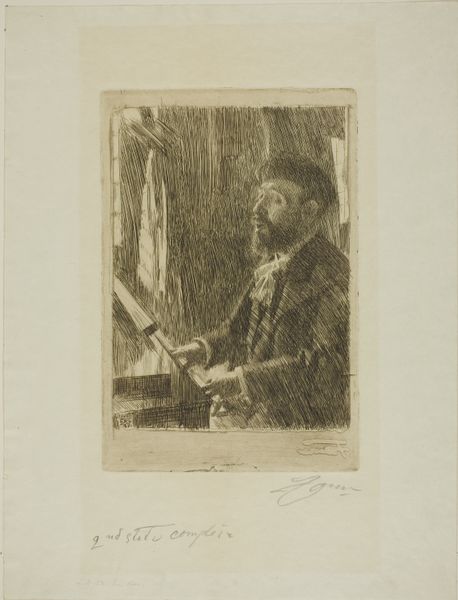
Dimensions: height 204 mm, width 155 mm
Copyright: Rijks Museum: Open Domain
Curator: Before us, we have James Abbott McNeill Whistler's 1894 pencil drawing, "Portret van Stéphane Mallarmé," housed here at the Rijksmuseum. Editor: Hmm, he looks a bit like a faded ghost, doesn’t he? Faint, ephemeral… the pencil strokes barely tethering him to this world. It's like capturing a memory on the verge of vanishing. Curator: Indeed. Whistler's technique emphasizes line and tone to evoke presence rather than provide a strictly representational likeness. Notice the economy of the strokes. Editor: Yes, a furious scribbling, like the artist was trying to catch smoke, or nail down a particularly slippery dream. Makes me wonder what Mallarmé was like—distant, thoughtful maybe? Curator: Mallarmé was a pivotal figure in Symbolist poetry, and Whistler moved in similar circles. There's a resonance in Whistler's visual language to Mallarmé's poetic aesthetic: suggestion and implication over explicit declaration. Editor: Oh, absolutely! The lack of distinct outline enhances the dream-like quality. His mouth seems obscured, as though guarding some unspoken secret. Like the quiet moment after a particularly profound verse escapes someone’s lips. Curator: Consider also how the very bareness of the paper supports the idea. The negative space acts as an active element within the composition, as important as what is actually rendered in graphite. It is integral to how we receive this portrait, this impression. Editor: You know, there’s almost a comedic irony at play here. This fragile, wispy sketch to contain a monumental figure. That a brief little dance of lines could say, 'Here was a visionary.' Curator: A successful drawing then captures a moment and points to what lies beneath the surface, to deeper psychological realities that more mimetic approaches can sometimes obscure. Whistler is revealing something through this subtle approach. Editor: Makes you wonder if the fleeting nature of the sketch itself becomes a comment on the transience of life, and maybe the enduring echo of artistic legacy, like whispers across time. Thank you for this look! Curator: An insightful point. Thank you for joining me, and for providing your illuminating perspective.
Comments
No comments
Be the first to comment and join the conversation on the ultimate creative platform.
